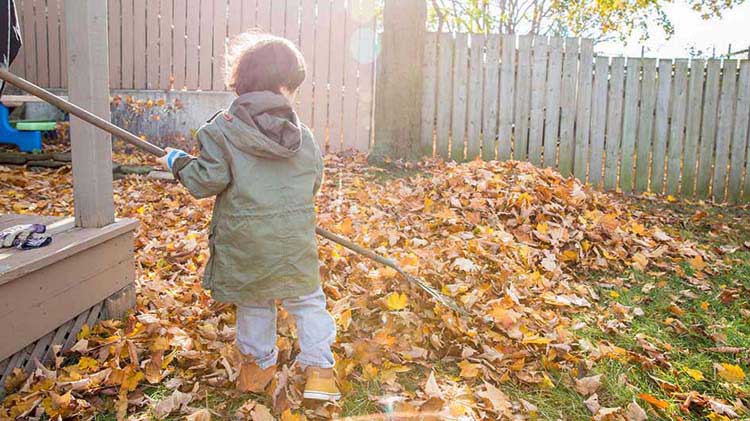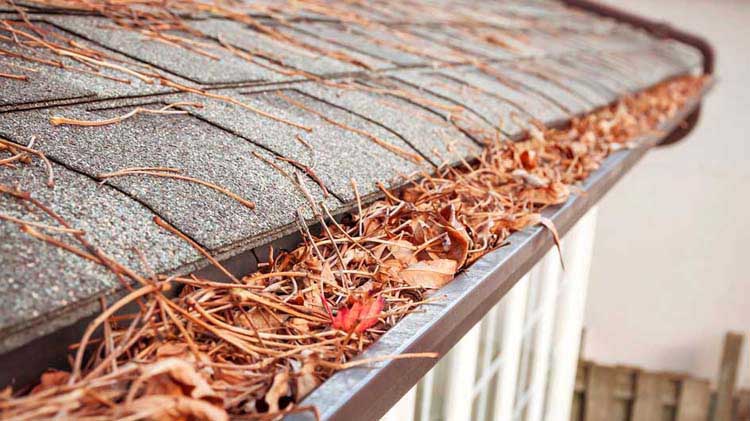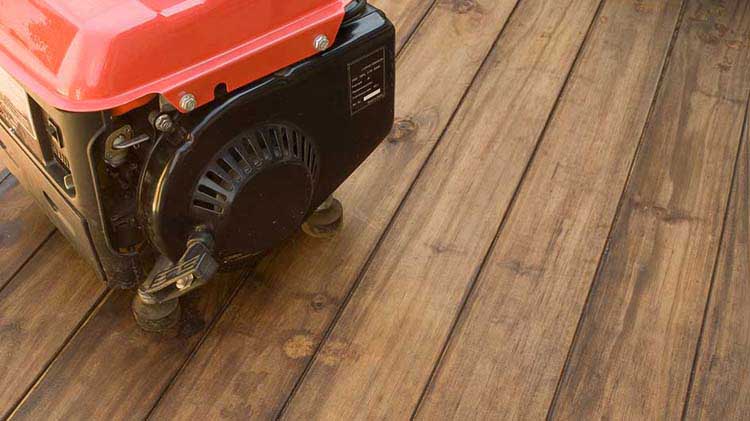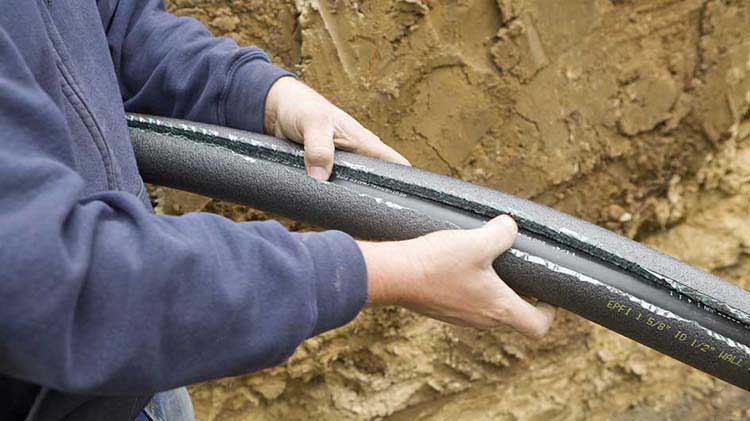Fall home maintenance checklist
Autumn home maintenance projects, such as cleaning gutters and checking your heating system, help you prepare for winter weather.
As the leaves change and the days get shorter, take the time this autumn to get your home ready for winter. A few easy steps might help prevent some surprise repairs during an inconvenient time of year.
To prepare your home for the deep freeze, layers of ice and drifts of snow, use this checklist to help make sure you're ready.
Maintain your heating system
Your HVAC is central to keeping your home warm during the winter. Face the challenges of winter with these simple furnace tips.
- Change the air filter in your furnace and check its efficiency before the cold weather begins. A clogged air filter can cause your furnace to work harder than it needs to and may even lead to the furnace not functioning.
- Stock up on several air filters for the winter, and change them every month.
- Call in an HVAC contractor to test the heating output and give the system a tune up. This technician can also check for and correct possibly hazardous carbon monoxide levels generated by your heating system.
- If you don't have a programmable thermostat, purchase one for the system to help lower your energy costs. In extreme cold weather conditions, consider leaving your thermostat at a set level.
- After your furnace has been tuned up to its maximum efficiency, take a moment to inspect your heating ducts and vents. Dust them off and clear away anything that may have gotten into them over the summer.
- Check your windows and doors for drafts:
- Check your windows for any leaks that may compromise your heating efficiency. If you feel cold air coming in, purchase a plastic sealing kit from the hardware store and place the plastic around the window to keep the heat from escaping.
- Be sure to check your doors as well, and replace the weather stripping if needed.
Check the fireplace, woodstove and/or chimney
Most chimney sweeps recommend an annual sweeping, but depending on how often you use the fireplace or woodstove, you might be able to wait on a full sweep. If you'll be using the fireplace or woodstove often, call a chimney sweep for an inspection.
Hopefully you'll have older, seasoned firewood ready for use. Seasoned wood is best for fires, as it burns cleaner and longer. It's recommended to keep the firewood covered at least 30 feet from the house.
Review home fire safety
The beginning of the heating season brings new potential for fire hazards, so take a moment to review fire safety in your home. Check fire extinguishers and replace them if necessary, and change the batteries in your smoke detectors. Also review your home fire evacuation plan with your family.
Clean out gutters
It's best to inspect and clean your gutters a few times during the fall, especially if there are many trees around your house. Clearing your gutters of fallen leaves and other debris is a crucial task before temperatures drop to help prevent ice buildup. If gutters remain clogged, water will spill over them and onto the ground next to the foundation, which can cause damage to the foundation or flood basements. Gutters and downspouts should be kept clean and should direct water away from the foundation, as well as from walkways and driveways, so they don't become slippery or icy.
Follow these tips to safely clean your gutters:
- Alert your family or a neighbor that you'll be cleaning the gutters, and check in with them at a planned time.
- Practice ladder safety:
- Inspect the ladder for defects and tighten any loose parts before climbing.
- Always keep one hand on the ladder.
- Avoid reaching too far.
- Enlist the help of a family member or neighbor to hold the ladder base.
- Wear gloves to protect your hands from potentially harmful bacteria or thorns.
- If you have to get on the roof to access part of your gutters, wear nonslip shoes.
- Consider hiring a professional if you believe cleaning your gutters is dangerous.
Trim branches
Storms and wind can snap dead branches, which can injure people or damage items in their path. Trim your bushes and trees to keep them in good shape using the right tools and a ladder, if needed.
- Choose tools that are made for trimming trees, such as hand pruners, loppers or a pruning saw, and make sure your tool is sharp.
- Follow proper trimming procedure according to the size of the limb. Check pruning guidelines for more guidance to achieve healthy growth.
- Wear gloves and long sleeves to protect your hands and arms.
- Follow the guidelines for ladder safety listed above.
- Consider hiring a professional if you believe trimming your tree is dangerous.
Rake leaves
While the orange, yellow and brown colors of the autumn leaves might not look nearly as nice on the ground as they do on the trees, leaving them there isn't a good idea as they can block light and moisture from reaching your grass. Rake or blow the leaves into piles and put them at the curb according to your town's yard-waste requirements. Most areas have ordinances about burning leaves, so check with your local area government first.
Raking leaves can seem like a harmless activity, but it's important to observe safety tips.
- Do a 10-minute warm up before you start raking.
- Wear gloves and long sleeves to prevent hand blisters and protect against any thorns or poisonous plants that you might collect.
- Avoid twisting your back to rake in a new direction; turn your feet first.
- Use your knees when lifting, and stop working if you feel pain in your back.
- Wear shoes with strong traction. Wet leaves can be slick.
- Stay hydrated and take frequent breaks.
Yard maintenance
Once the leaves are taken care of, don't forget about other lawn maintenance. Come spring, your grass will thank you for following these tips:
- Mow until the first hard frost — this will help avoid matting and vulnerability to snow mold.
- Water through the end of October — although it's cooler, and usually moister in fall, keep watering to help grass roots prepare for winter if your lawn isn't getting an inch of water each week naturally.
- Aerate every few years — this will help avoid compaction and is good preparation for fertilizing.
- Fertilize — the extra plant sugars help protect roots from freezing and provide extra energy for a spring comeback.
- Overseed — filling in bare spots can discourage weeds, and the fall temps and moisture are easier on the seed.
After sweeping the leaves off your patio, remember to clean, pack up and store any patio furniture for the winter. Disconnect garden hoses and, if practical, use an indoor valve to shut off and drain water from pipes leading to outside faucets. This reduces the chance of the pipes freezing in the section of pipe just inside the house.
Store your lawnmower and other equipment
Prep your lawnmower and other yard equipment for storage by cleaning it, performing any needed maintenance and storing it in an enclosed space. Consult the owner's manual for how to perform winter preparation tasks, and for any restrictions on storage that could affect the machine's performance come spring.
Safely store gasoline
It's recommended that you empty out unused fuel or add a gasoline stabilizing additive to gas-powered equipment stored in the garage because stale fuel can clog the fuel lines/carburetor. Store gasoline in tanks out of children's reach and have it ready for use in your snow blower or emergency generator, if needed.
Test your emergency generator
It's a good idea to have an emergency generator if you live in an area that sees a lot of ice storms, as these are a major cause of blackouts during the winter. If you have a generator, give it a test run to see if it's in good working order. Make sure you never run the generator in an enclosed space — like your garage — as it will present a carbon monoxide hazard.
Inspect your roof
Inspect your roof or hire a licensed professional to evaluate the condition of your roof. Look for any wear and tear that might have happened during the previous season's severe storms. If any shingles are curling, buckling or cracking, replace them. If there is extensive damage, you might consider re-roofing with impact resistant shingles. Don't forget to check any flashing around skylights, pipes and chimneys to prevent snow and ice from creeping in.




